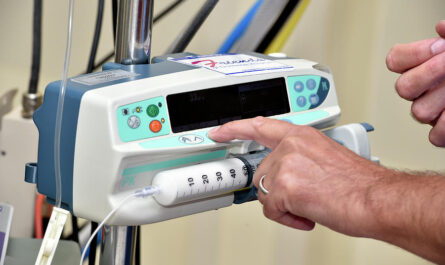The BASHIR Endovascular Catheter (THROMBOLEX, Inc.), recently approved by the U.S. Food and Drug Administration (FDA), is revolutionizing the treatment of acute pulmonary embolism by opening blocked arteries deep within the lungs. In addition to its proven effectiveness in reducing blockages in lung arteries, new research conducted at the Lewis Katz School of Medicine at Temple University has shown that the BASHIR catheter also successfully reduces blockages in the smaller segmental pulmonary artery branches responsible for oxygenating the blood in the lungs.
This groundbreaking study, part of the National Institutes of Health-sponsored multicenter RESCUE clinical trial, has unveiled a correlation between the reduction in blockages in the small lung arteries and the functional recovery of the right ventricle of the heart. The right ventricle is responsible for pumping blood into the main pulmonary artery of the lungs.
One of the significant advancements of the BASHIR catheter compared to other devices is its significantly lower bleeding rates, which is crucial in the treatment of acute pulmonary embolism. The findings of the study have been published in JACC: Advances.
Dr. Riyaz Bashir, Professor of Medicine and Director of Vascular and Endovascular Medicine, co-inventor of the BASHIR Endovascular Catheter, and first author of the report, explains that previous treatments for acute pulmonary embolism did not explore blockages in the smaller, distal pulmonary arteries. The BASHIR catheter, a small tube-like device, consists of a helical basket with six mini-infusion catheters at its end. When expanded within a clot in a large blood vessel, the infusion basket opens new channels, allowing blood to flow through the clot. This flow carries clot-dissolving chemicals, accelerating the breakdown of the clot.
The occlusion of small lung arteries is the primary cause of reduced blood flow in patients with acute pulmonary embolism. Dr. Bashir emphasizes that the more blockages a patient has, the lower their chances of survival. Therefore, relieving obstructions in both large and small arteries is a crucial treatment goal.
Surviving patients may face a high risk of developing chronic thromboembolic pulmonary hypertension (CTEPH), a life-threatening condition characterized by increased blood pressure in the lungs.
The recent study conducted by Dr. Bashir and his team observed a significant decrease in occlusions in the segmental and proximal branches of the pulmonary artery just 48 hours after treatment with the BASHIR catheter. Even arteries located far from the infusion basket experienced reduced blockages, resulting in improved blood flow and the healing of the right ventricle.
Dr. Bashir notes that the improvements in blood flow can be attributed to the expansion of the basket and the flow of the body’s clot-dissolving molecules into the clot, causing the blockage to shrink. As blood flow volume improved, so did the function of the right ventricle, potentially leading to improved survival rates.
Moving forward, Dr. Bashir and his team plan to investigate the mechanisms behind the observed reductions in arterial blockage. Further trials are necessary to gain a comprehensive understanding of the impact of treatment with the BASHIR catheter on patient survival and the incidence of CTEPH. The future of acute pulmonary embolism treatment holds immense promise with this groundbreaking endovascular catheter, offering new hope for patients suffering from this life-threatening condition.
*Note:
1. Source: Coherent Market Insights, Public sources, Desk research
2. We have leveraged AI tools to mine information and compile it



